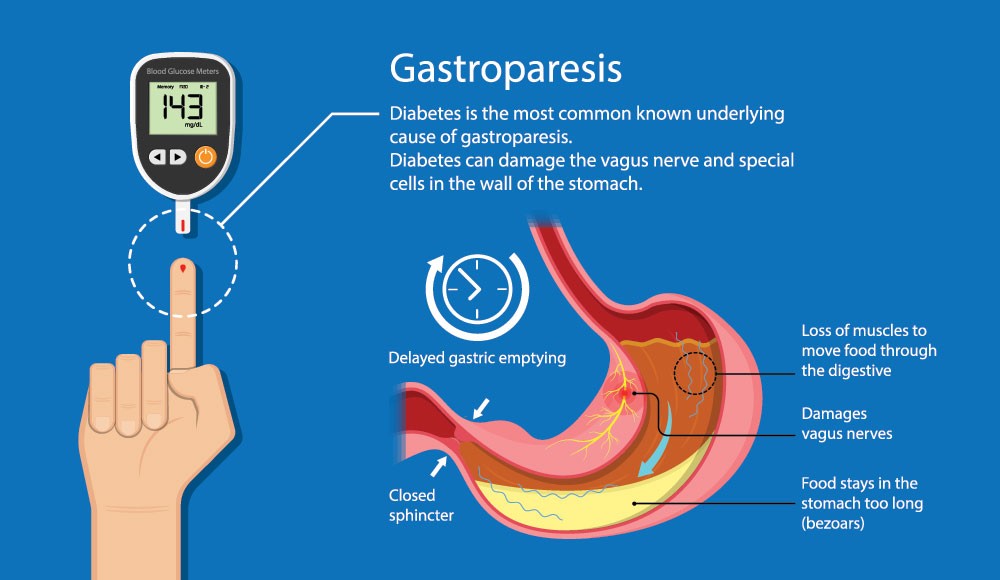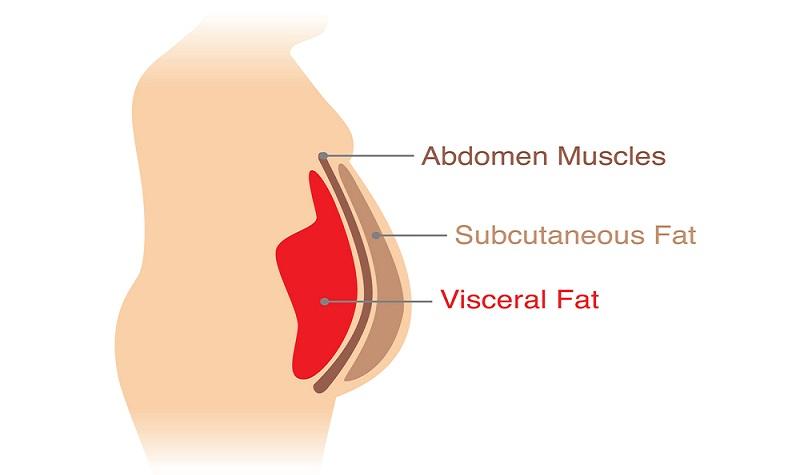Last updated on May 24th, 2023
Diabetic ketoacidosis (DKA) is an emergency medical condition in diabetic patients that can be life-threatening. It has been a leading cause of 2% death rates in diabetic patients since the 1970s. It can occur in patients with both types of diabetes i.e. type 1 and type 2 and especially in patients with renal disease who are at higher risk.
What triggers the DKA condition and how it should be managed? This article provides detailed insights on DKA, the causes, and the best treatment to manage such situations.

What is Diabetic Ketoacidosis or DKA?
A higher level of ketones in our bloodstream for a longer time leads to Diabetic ketoacidosis. Ketones are acidic substances released by the liver into the bloodstream when insulin is deficient.
When the ketones levels are > 1.6 mmol/L for a longer time, it is an indication of Diabetic ketoacidosis. If left untreated the condition can be fatal.
Also Read: Normal blood sugar levels chart for adults

Causes of Diabetic Ketoacidosis (DKA)
Due to Diabetes:
The poor management of diabetes leads to diabetic ketoacidosis. It is more common in type-1 diabetes, but can also occur in type-2 diabetes patients.
Insulin is the hormone that turns blood sugar into energy needed for body metabolism. When insulin production decreases due to diabetes, blood sugar levels increase. This triggers the release of glucagon and other counter-regulatory hormones which releases energy without the need for insulin.
Glucagon and other counter-regulatory hormones release energy by decomposing the body fats. The liver burns the body fats for generating the energy needed for the body’s metabolism. This process releases ketones.
Ketones are acidic and thus make the blood acidic. Higher ketones for a longer period can poison the body and consequently leads to serious medical conditions of Diabetic ketoacidosis.
Summary:
Ketones are released by the liver after burning body fat for generating energy when insulin is deficient. A high level of ketones leads to DKA.
Other Causes of Diabetic Ketoacidosis:
Other reasons that cause Diabetic Ketoacidosis are as follows:
- Hormone disorders: Disease which causes the increase in the hormones like adrenaline or cortisol that counters the effects of insulin.
- Illness: Due to diseases like pneumonia or urinary tract infection there is a rise in the hormones like adrenaline which decreases the effects of insulin and can lead to DKA. Apart from it renal diseases also trigger DKA.
- Mismanaged insulin therapy: An improper insulin therapy or missing of insulin injections reduces insulin levels.
- Pancreatitis: It is the infection of the pancreas. The pancreas produces insulin. Due to the infection, there is a decrease in the production of insulin. Decreased insulin levels for a longer time leads to DKA.
- Usage of corticosteroids as they counter the effects of insulin.
- Usage of medicines like diuretics as they decrease ketones excretion in the urine due to dehydration.
- Alcohol consumption causes diuresis and damages the liver all leading to increase in ketones.
- Physical or emotional stress.
Summary:
Hormone disorders, diuretics and corticosteroids, alcohol consumption, pancreatic, diseases like pneumonia, and urine infection all can trigger DKA.
Pathophysiology
Diabetes ketoacidosis is associated with insulin deficiency and elevated blood glucose levels (greater than 300 mg/dL). It results in three major pathophysiological syndromes:
- Metabolic acidosis – Metabolic acidosis is caused due to increased production of ketones in the blood and a decrease in peripheral cell use (due to the starvation state of the cells).
- Osmotic diuresis – When the blood sugar level reaches too high, glucose spills over into the urine where it creates an osmotic pressure. Due to this, a large amount of water is drawn by glucose and leads to dehydration in the patient.
- Electrolyte disturbance – Electrolyte imbalance is caused due to excessive urination. Excretion of electrolytes such as potassium, calcium, magnesium occurs due to the loss of large amounts of fluids through urine and results in electrolyte disturbance.
Summary:
Certain abnormal changes take place in the body due to DKA and this includes electrolyte disturbance, osmotic diuresis, and metabolic acidosis.
Symptoms of Diabetic Ketoacidosis
Signs of Diabetic ketoacidosis can be seen very quickly. The following symptoms indicate that you might be suffering from diabetic ketoacidosis:
- Frequent urination
- Excessive thirst
- High blood sugar levels (hyperglycemia)
- High ketone levels in the urine
- Nausea or vomiting
- Rapid and fruity-smelling breath
- Dry mouth
- Fatigue or extreme tiredness
- Abdominal pain
- Confusion
If left untreated, diabetic ketoacidosis can lead to coma or death. Therefore, seek medical help if you suspect you are experiencing DKA (Diabetic Ketoacidosis).
Also Read: Watermelon for diabetes good or bad?
Diagnosis of Diabetic Ketoacidosis (DKA)
The doctor may ask for DKA analysis in the following cases:
- When you have high blood sugar levels >250 mg/dl
- When you are feeling frequent urination
- In case you are pregnant
- When your ketones are in the range of 1.0 to 3.0 or > 3.0 for a longer time.
To diagnose DKA, the doctor shall ask for blood tests and urine tests.
Blood tests will help to measure:
- Blood sugar levels – As there is a lack of insulin in the body, the blood sugar levels will be high.
- Ketone levels – Due to the breakdown of fats for energy, ketones will start building up in the blood.
- Blood acidity – The excess ketone content will make your blood acidic.
Urine tests: This shall include urine analysis to see ketones level in the urine.
To determine which factor triggered DKA and the possibility of DKA complications, the doctor may suggest some additional tests. It includes:
- Basic blood work (to monitor metabolic function)
- Chest X-ray (to check for infection like pneumonia)
- Arterial blood gas (to determine blood acidity)
Also Read: Can You Reverse Type 2 Diabetes?
Treatment of Diabetic Ketoacidosis
The treatment of DKA includes balancing blood sugar levels as well as insulin levels. The treatment options are as follows:
Fluid Replacement Therapy:
The initial treatment for patients with DKA is to restore the extracellular fluid levels through external fluids. The external fluids are given through intravenous injections.
For mild cases: Give 0.9 percent sodium chloride solution.
Mild to moderate Cases: Give 0.45 percent sodium chloride solution.
When blood sugar levels are at 250 mg per dL Glucose is added.
Also Read: How to Lower Blood Sugar?
Insulin Therapy:
Low dose insulin intravenous injections are given to the patient. The dose of 0.15 units of insulin/Kg is given along with saline.
Note: This treatment is not to applicable if the patient is having hypokalemia. In such a situation, the patient may suffer from cardiac arrhythmia. Thus, it is necessary to get serum potassium levels checked before this treatment.
Also Read: Difference between ketosis and ketoacidosis
Electrolyte Replacement Therapy
Due to DKA and frequent urination the balance of major electrolyte in the body gets disturbed. Thus, electrolytes are provided in the form of external solutions. This includes potassium, sodium, phosphate replacement in the form of Intravenous injections.
Along with the above treatments, the doctor might prescribe antibiotics. For fighting infection antibiotics are given.
Summary:
Various treatment options for DKA includes insulin therapy, fluid replacement therapy, and Electrolyte replacement therapy.
Complications
The treatment of DKA can disturb the balance of the basic electrolytes. It can thus cause numerous complications. Treatment of DKA thus requires care and attention. Some of the complications are:
- Hypokalemia (low potassium) – The potassium level can drop significantly, due to the excessive loss in fluids and insulin during the treatment. Very low potassium levels can cause severe health problems like muscle weakness and heart rhythm problems.
- Hypoglycemia (low blood sugar levels) – Uncontrolled insulin therapy can lead to very low blood sugar or hypoglycemia. Monitor blood sugar levels frequently. Moreover, adjust insulin dose regularly.
- Swelling inside the brain (cerebral edema) – The sudden adjustment of blood sugar levels during DKA treatment can produce swelling in the brain. Children are more likely to suffer from this complication. Its symptoms include headache, lethargy, and seizures.
- Kidney damage – The fluid loss due to frequent urination can damage the body organs like the kidney.
- Pulmonary edema – Excessive fluid replacement in patients with chronic kidney disease or congestive heart failure can lead to pulmonary edema.
You must have noticed that most of the DKA complications are associated with its treatment itself. Therefore, the treatment of a diabetic ketoacidosis patient should be performed carefully.
Summary:
A mismanaged treatment of DKA can lead to numerous complications like Kidney damage, Cerebral Edema, Pulmonary Edema, Hypoglycemia, and Hypokalemia.
Prevention and Cure
Diabetes ketoacidosis is a complication of diabetes. Therefore, the first thing you can do to prevent DKA is diabetes management.
- Diabetes management – Avoid a sedentary lifestyle and perform exercise regularly. Acquire healthy eating habits and stay hydrated with water. Take your medications on time.
- Check your blood sugar levels – Monitor your blood sugar levels regularly to ensure that it is within the target range.
- Adjust your insulin dosage – Consult your doctor about managing and adjusting your insulin dosage based on your health condition.
- Check your ketone levels – In case of illness, perform the urine test to check the ketone levels. If the ketone level is moderate or high, seek medical help immediately.
- Early detection of diabetic ketoacidosis is necessary. Therefore, seek emergency care if your blood sugar level and ketones level are high.
Summary:
DKA is a side effect of mismanaged diabetes. A healthy lifestyle, timely medicines, and healthy food habits can help in the prevention of DKA.
Last But Not Least
Follow your diabetes treatment plan and take immediate action if you are experiencing DKA symptoms.
Diabetic ketoacidosis can be deadly. But your consciousness and quick response can save you from unhappy outcomes.
Also Read: A1c chart
FAQ’s:
What is DKA Full Form?
Can DKA cause brain damage?
Yes DKA can lead to cerebral edema. Moreover, DKA can cause Hypoglycemia which can cause coma if left untreated.
Can DKA reoccur again?
Yes, it can. As the insulin levels become low again DKA can reoccur again.
How long does it takes to recover from DKA?
If admitted to the hospital it shall take one to 4 days to recover from DKA. The key to recovery is to get fast treatment.
Can a person with Type-2 Diabetes face diabetic ketoacidosis?
Type-1 diabetes people are at more risk for this disease. But yes Type 2 diabetic patients can also suffer from DKA.
Disclaimer
This site provides educational content; however, it is not a substitute for professional medical guidance. Readers should consult their healthcare professional for personalised guidance. We work hard to provide accurate and helpful information. Your well-being is important to us, and we value your feedback. To learn more, visit our editorial policy page for details on our content guidelines and the content creation process.

 English
English












